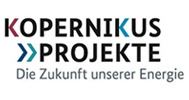FAQs
How the Kopernikus projects answer the most frequently asked questions
The FAQs of the Copernicus Projects provide a deeper insight into the topics on which the Copernicus Projects are researching. They answer everything you need to know to be able to have your say. The questions and answers on the topics of Power-to-X and energy flexibilization were created and reviewed by the scientists of the Copernicus Projects.

The most frequently aked questions about energy flexibilization

The FAQ on energy flexibilization answer the following questions: How does flexibility affect the efficiency of a company? How does it affect the life expectancy of production machinery? Are there industrial processes that can be made more flexible in every company? What possibilities are there to offer flexibility as a service and on the markets? Is flexibility worthwhile even for companies that are not exempt from the EEG levy?
The most frequently asked questions about Power-to-X

The Power-to-X FAQ provide answers to the following questions: Why Power-to-X? How efficient is Power-to-X? Why is Germany researching Power-to-X, even though it will not have any surplus power? If hydrogen is to be produced in Africa with Power-to-X - where will the water come from?


